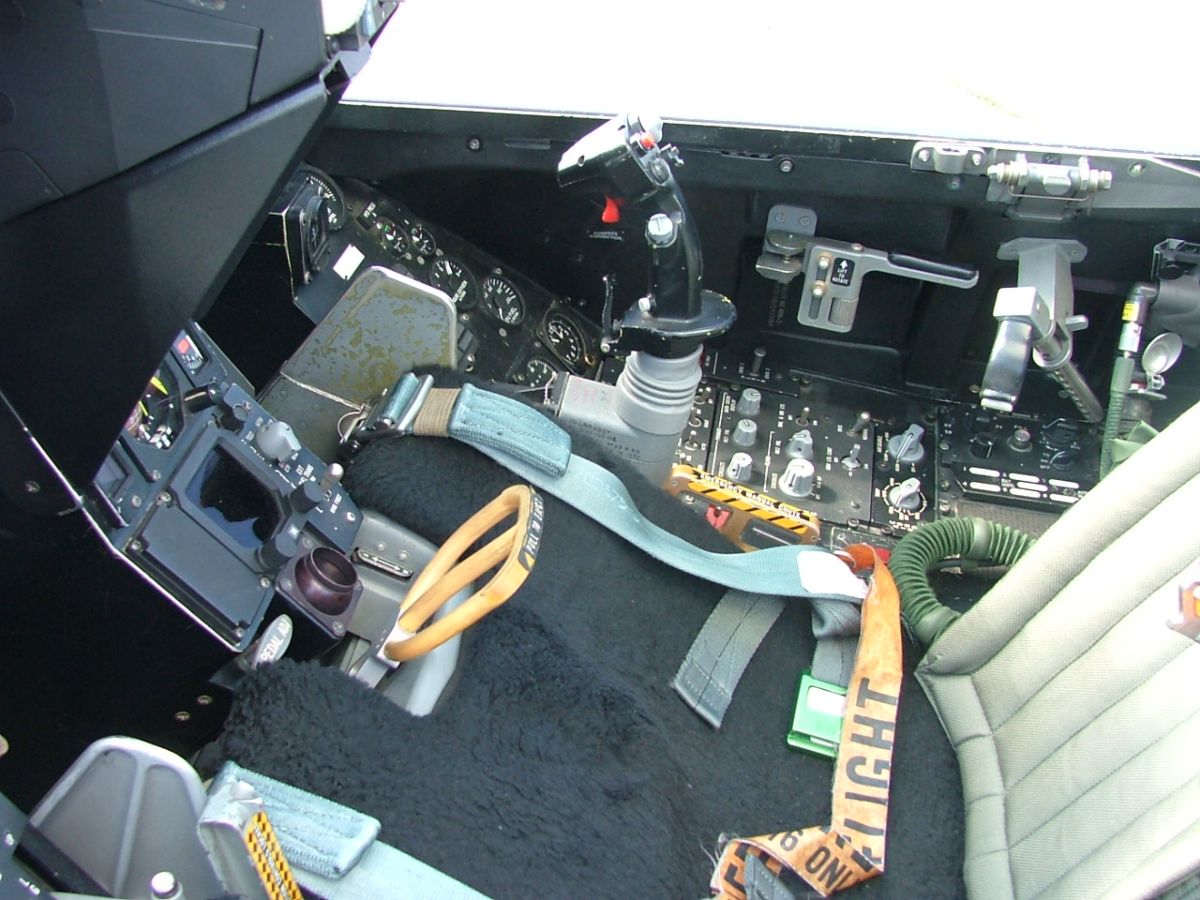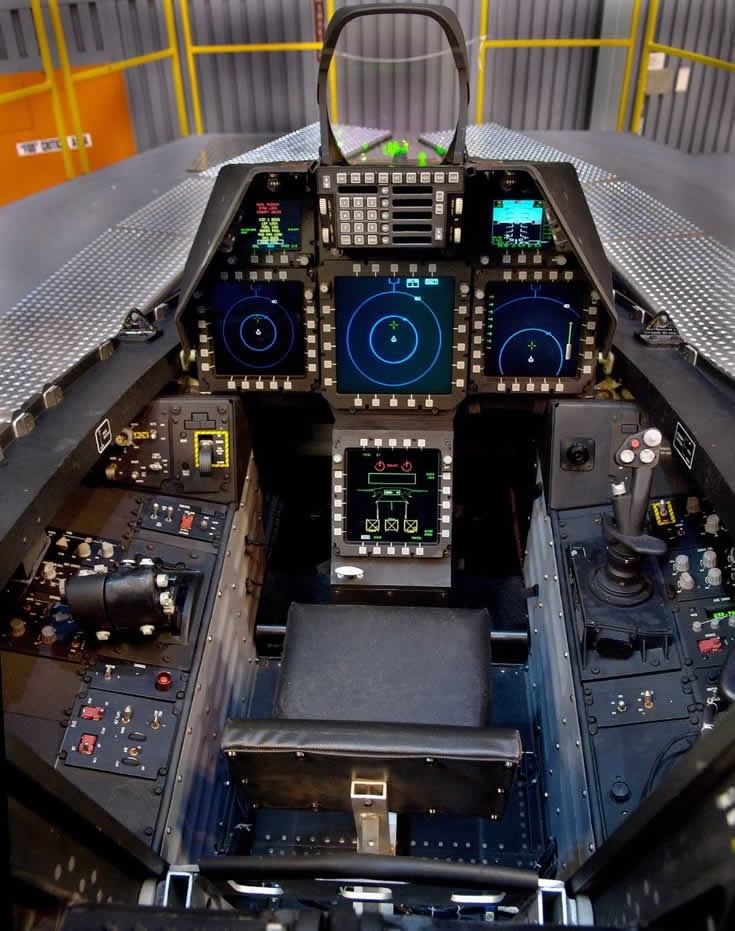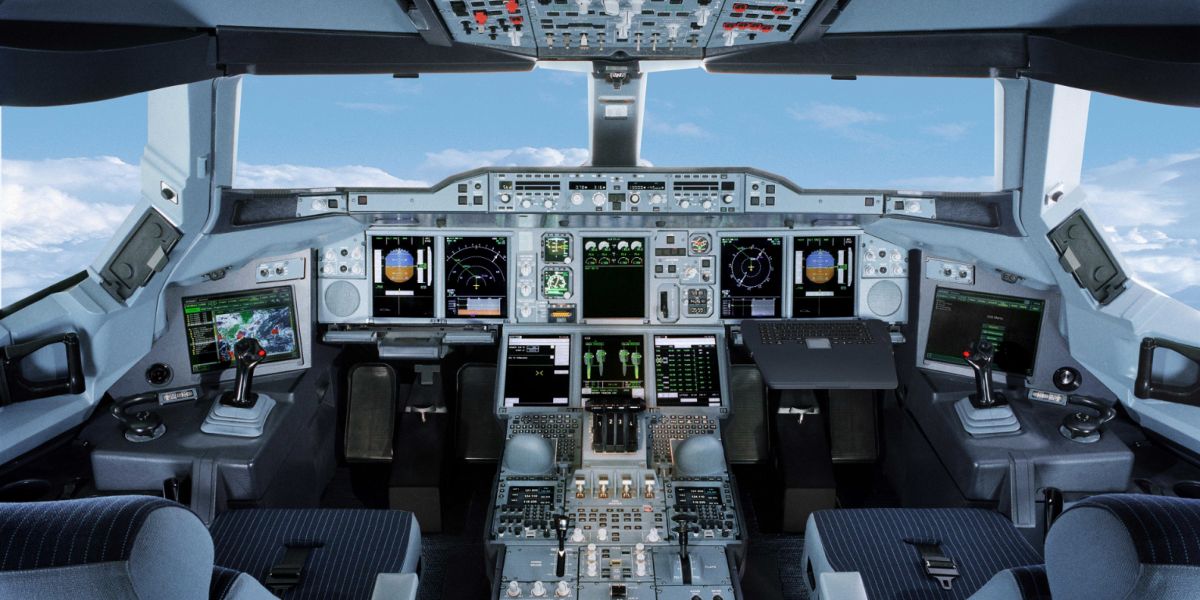Control stick moved along the right side of the cockpit
The F-16 Fighting Falcon is a compact, multi-role fighter aircraft. It is highly maneuverable and has proven itself in air-to-air combat and air-to-surface attack. The Viper (as the F-16 is dubbed by its pilots) provides a relatively low-cost, high-performance weapon system for the United States and allied nations.
The pilot has excellent flight control of the F-16 through its “fly-by-wire” system. Electrical wires relay commands, replacing the usual cables and linkage controls. For easy and accurate control of the aircraft during high G-force combat maneuvers, a side stick controller is used instead of the conventional center-mounted stick. Hand pressure on the side stick controller sends electrical signals to actuators of flight control surfaces such as ailerons and rudder.
The F-16 was the first fighter aircraft that saw the control stick moved from its traditional position between the pilot’s legs to along the right side of the cockpit—a rather unusual location at the time.
However, after the Viper, the unconventional stick position was chosen for most of the new US fighter planes.
Center stick
Why is that?

‘The center stick was originally mechanical and it moved mechanical things so it made sense to put it in the center,’ Chuck Hunter, F-14 Pilot and developer of F-35, F-22, explains on Quora. ‘From the brains perspective having it in the center made sense also as you were moving thing around from the center. There were often times in high g fighting were two hands on the stick were better to pull because it took physical strength, or even switching hands if stretched way to the right looking over my shoulder. The downside was you tended to pull the stick with you to the right when you twisted to the right.
‘I remember having runaway nose down trim and it took two hands to hold the aircraft’s nose up for any period of time. The latest aircraft have automatic trim as part of the flight control system, so this is no longer an issue.
‘When exclusively fly by wire you didn’t need to move anything mechanical. In fact, the original F-16 stick didn’t move at all, it was all done with pressure. Pilots didn’t actually like that so now it moves just a little to give some feedback.
Why does side control stick make more sense?
‘Once the center mechanical linkage was not an issue the side stick made more sense for lots of the reasons given including:
- More comfortable in all phases of flight with both arms naturally to the side and resting on an arm rest.
- Video game era pilots comfortable with controlling things with controllers.
- Better view of all the displays.
- An even body position in highly dynamic flight.
‘The fact that the side stick takes space where buttons used to be is completely replaced by MultiFunction Displays (MFDs) for controlling most things in the aircraft now, so this is not an issue.
‘I can’t remember that [the G suit] ever being an issue, not something I ever even thought about. When fighting in the center stick days we used our legs all the time for controlling the rudders, so the G suit on the legs was not a factor in interfering with the arms.’
Hunter concludes;
‘Even commercial aircraft are moving to side sticks now that it is strictly fly by wire. More natural for the body, more comfortable, and better view of all the information available in the displays.’



Photo by Edvard Majakari via Wikipedia, Lockheed Martin and Airbus

